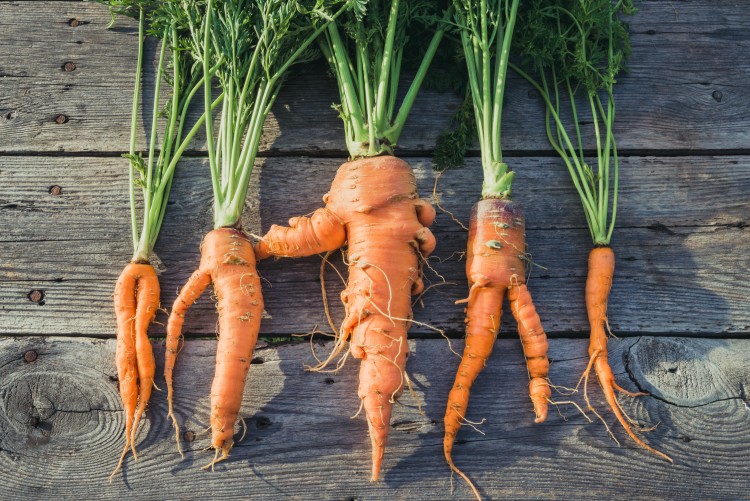
The ugly truth: more consumers will buy unattractive fruits and veggies when they’re labeled ‘ugly’

Few marketers would recommend that clients call their products ugly — but new research from the UBC Sauder School of Business shows that when it comes to selling misshapen fruits and vegetables, labeling them as “ugly” can be a recipe for sales success.
According to a recent report, U.S. farmers throw away up to 30 per cent of their crops annually — that’s 66.5 million tons of edible produce— because of cosmetic imperfections. An earlier study found that American retailers throw away over $15 billion in edible produce a year. What’s more, 1.4 billion hectares of land and 25 per cent of the world's fresh water are used to grow produce that will later be thrown away.
In 2014, French supermarket chain Intermarché garnered international headlines when it began marketing misshapen produce as “ugly,” and since that time, food retailers around the world have launched campaigns to sell “imperfect produce” or “produce with personality.”
Some have been successful, while others withered on the vine — but until now, researchers hadn’t adequately explained why consumers reject imperfect produce, or what marketing approach was most likely to whet their appetites.
For the study, the researchers at UBC Sauder conducted seven studies that tested the efficacy of ‘ugly’ labeling (describing the unattractive produce as ‘ugly’) by having participants purchase produce at a farmers market and online, and by examining people’s preconceptions about misshapen foods.
Interestingly, they found that consumers expected the imperfect produce to be less tasty and even less nutritious than more traditionally attractive foods.
“People attach a beauty premium to attractive objects, and believe they have all kinds of positive attributes. Likewise, there's often an ugliness penalty effect, which negatively impacts perceptions of objects,” says UBC Sauder PhD student Siddhanth Mookerjee, who co-authored the new study, From Waste to Taste: How “Ugly” Labels Can Increase Purchase of Unattractive Produce, along with UBC Sauder Assistant Professor Dr. Yann Cornil and UBC Sauder Associate Professor Dr. JoAndrea Hoegg. The study is forthcoming in the Journal of Marketing.
“We found that people also use appearance to judge unattractive produce and make these negative inferences, even though there’s no factual reason to believe it will be less tasty or less healthy.”
But it’s not all bad news for unattractive foods. The researchers also found that when the produce is labeled “ugly,” consumer hesitancy disappears — and it’s not because of humour or originality. Calling items “ugly” signals to consumers that the only difference between items is aesthetic, explains Mookerjee, which makes them aware of their bias and significantly increases their willingness to buy the less attractive produce.
“We’re pointing to the source of the rejection, to the flaw, which effectively de-biases the consumer,” explains Mookerjee. “It makes people aware of the limited nature of their objection to the unattractive produce and makes it clear to consumers that there are no other deficiencies in the produce other than attractiveness.”
The researchers tested their hypothesis with multiple field studies, including one at a local farmers market where they sold both attractive and unattractive tomatoes, carrots and potatoes. They not only found customers spent more on the misshapen produce when it was labeled “ugly”; they also spent more on that ugly produce than they did on the conventionally beautiful foods.
And even though the ugly produce was sold at a 25 per cent discount, it turned out to be more profitable for sellers, as the cost of acquiring the ugly produce was lower.
However, there is a sweet spot when it comes to discounting ugly produce, cautions Mookerjee. If the price reduction was too steep — 60 per cent rather than 20 per cent — participants expected the “ugly” foods to be of low quality.
The researchers also found that ‘ugly’ labeling is more effective than other popular labels, such as ‘imperfect.’ Although grocery store owners and managers who were interviewed preferred using the ‘imperfect’ label, the researchers found that ‘ugly’ labeling was more effective than ‘imperfect’ labeling at driving choice of unattractive produce and generating click-throughs in online ads.